May/June 2010
Pas de deux en France
This message covers two separate visits to France, interrupted by our time in Switzerland and Germany as described in our last message.
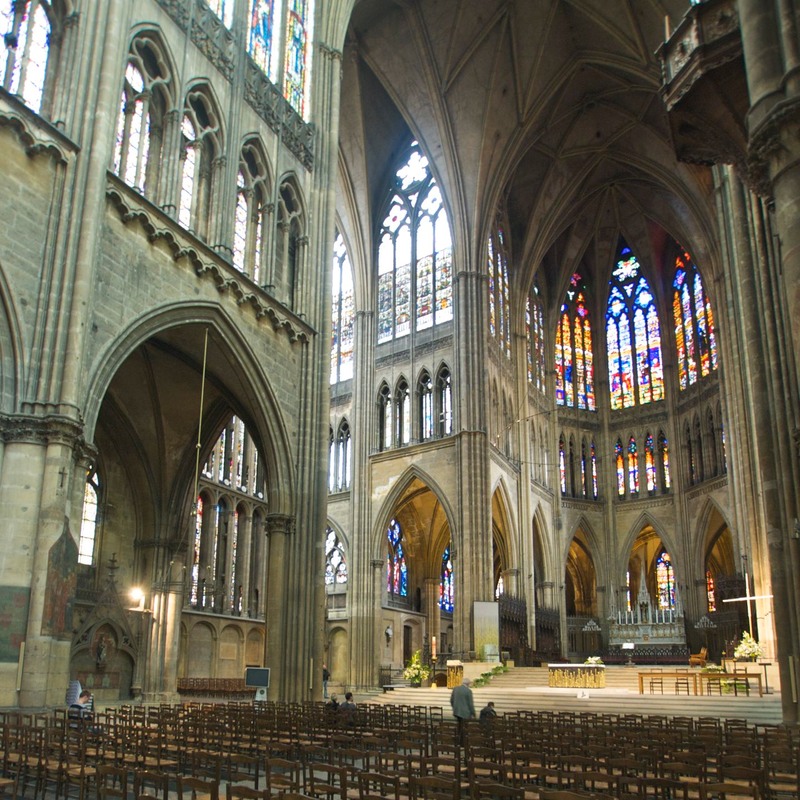
So we entered France, dropping straight down from Luxembourg City to Metz, a lovely old city along the Moselle River. We immediately knew we’d made a good choice. Metz is charming and full of ancient edifices. We parked in an area very near the historic part of town, and walked our feet off. It’s a beautiful area and we had pretty nice weather to enjoy it in. The St. Etienne cathedral is a knockout, with what is variously represented to be the highest nave in Europe…France…or at least in this area – all depending on who you want to believe. There were lovely old bridges over the river, lots of blooming flowers and trees, and bunches of old buildings, all in this earth-colored rock that positively vibrated in the warm sun. We spent the night in a motorhome parking area near the cathedral, walked some more in the morning fog that had come in, and then trekked down to the city of Nancy.
The French countryside is lovely to see, trees and flowers all at their best; we saw fields of flax (or maybe rapeseed) that went on for miles. We are staying off the large roads and are out in the quiet country; it’s charming. Between Metz and Nancy we passed the village of Agincourt. Agincourt, we said! Where’s the monument, where’s the museum? This was one of the most important French-English battles ever; think of “Once more into the breech” – either Kenneth Branaugh or Sir Laurence Olivier comes to mind, depending on your age group. Well, as it turns out, the French spell that town Azincourt; it is near Boulogne, not around here at all. That experience will have to wait until we are nearer the coast.
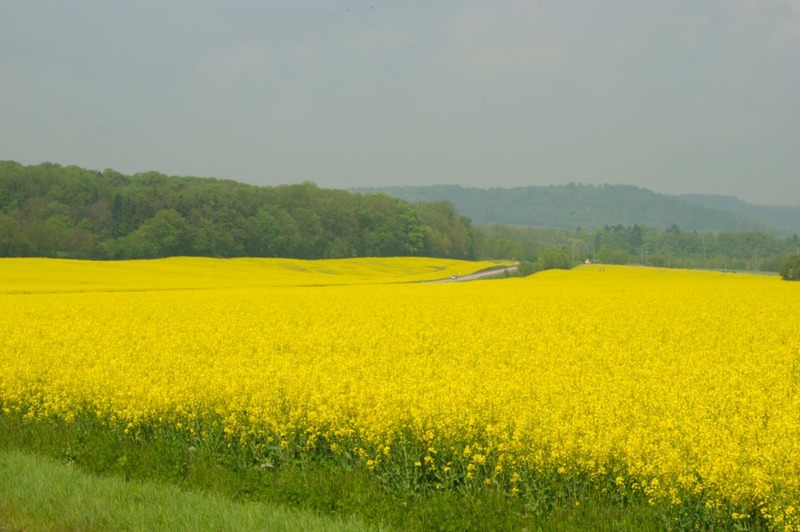
Nancy was more of the same, but a bigger city. It has many lovely parks, a center square that makes Versailles look drab, and -- most of all -– the Musée d’Ecole de Nancy. It seems that this school of design was the foremost school in France for the development of Art Nouveau, which flourished roughly from 1880 to 1910 or so. Much of it was stained glass and wood furniture; you’ve heard of it I’m sure. This museum is an old mansion that was designed for and furnished with Art Nouveau as its central theme. It’s quite incredible. The mansion itself is quite interesting on the outside, and there is a lovely garden; but it’s the furniture and glass that knock you sideways. Unfortunately, once again we were unable to take pictures to show you.
From Nancy we headed east into the Alsace region, wine country. This region runs right along the French side of the Rhine, which forms the border with Germany. At various times in its history it has belonged to one or the other of the two countries, so naturally its culture provides a mixture of them both.
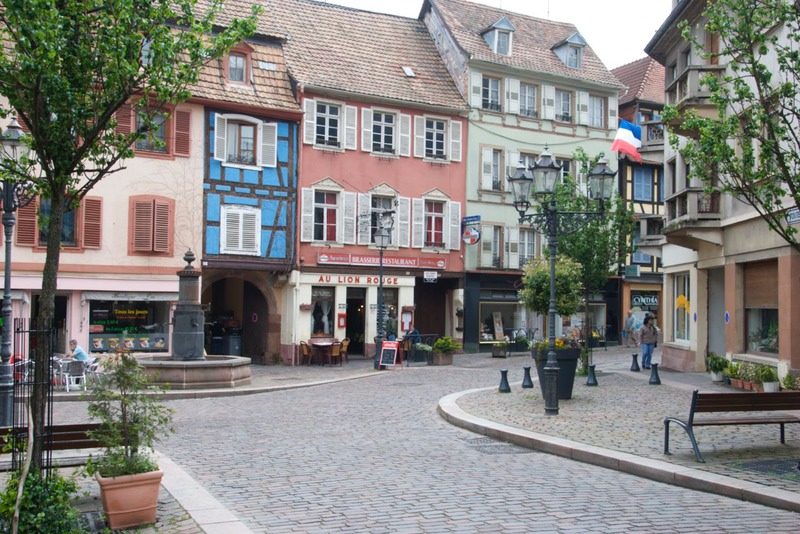
We poked around many charming villages, all geared toward tourism and tasting. They were cute, some much too cute by half, but each quite attractive. A few we liked the best were St.-Hippolyte and Kaysersberg and Ribeauvillé. If you’re asking, we did stop in Colmar, but got out again as fast as we could; not to our liking at all. We don’t actually break out into a rash at the sight of tour busses, but almost. Heading for the hills, we escaped into the Vosges Mountains, where we felt quite at home: the towns seemed more “real” – lots of wine being produced still, but as a business, not a tourist operation. One we liked a lot that we thought represented this was Gueberschwihr; it wasn’t all tarted up, but just going about its business. We drove the windy roads, through forests that reminded us of western Oregon: both bright and dark green trees, misty and wet, lots of logging underway. These are not high mountains by western standards; both nights were spent at around 2000 feet. But it was quite cool and we were glad for the heater. The Vosges are lovely, and we highly recommend a wander through them if you ever have time.
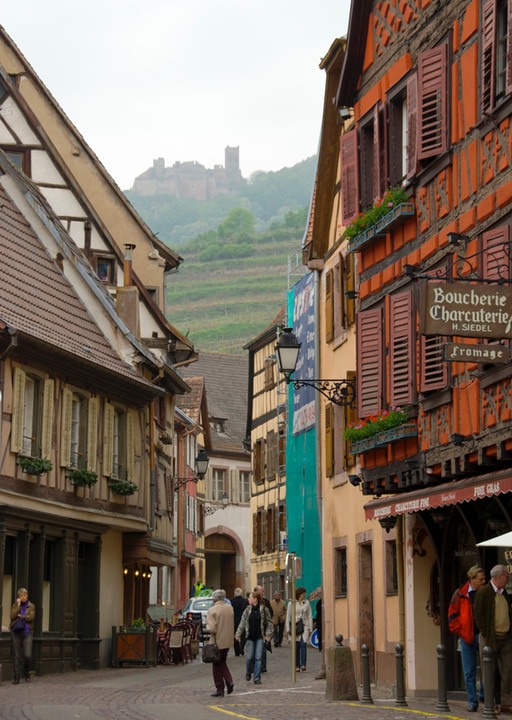
A profound experience we had in these mountains was a visit to Struthof, near Rothau, the site of the Natzweiler Concentration Camp. We spent a long time there. It was a small camp as Nazi camps went, in a very remote and lovely location, and unknown to us before our arrival there. The camp has been left as it was found, and the starkness and horror are perhaps more striking because of the setting. It is a memorial to those who died, both there and at other locations. It is also the site of the European Center on Resistance and Deportation, and deals extensively with both of those subjects. It is a relatively new museum, and is very effective. But just the setting is enough. We stayed the night in the parking lot, and in the morning we walked around in the quiet, listening to the birds and looking at the view. We were reminded of Hitler’s aerie in the mountains above Berchtesgarten.
This camp was the first to be liberated by the Americans, a few months after the Russians arrived at Dachau. The word had spread, and by the time the Americans arrived, all the prisoners had been moved to other locations; the camp was absolutely empty when they entered. It must have been eerie. We spent some time talking to one of the people who worked there; he said that just in the past week three Americans had visited, former soldiers who had been part of the liberation force. It had been quite a visit for them and the attendant who mentioned it had been quite moved. They perhaps don’t get a lot of Americans coming here as he mentioned their visit to us because we were also from the U.S.
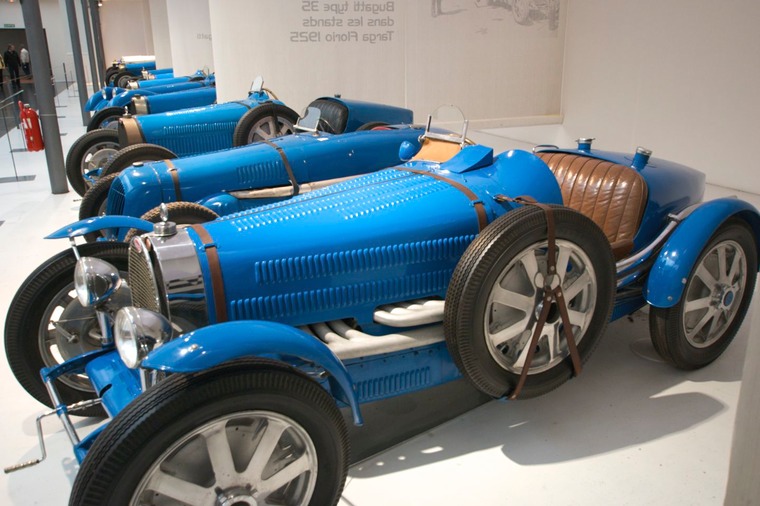
Heading for the Swiss border, we stopped for the day in Mulhouse, home of the Cité de l’Automobile, the French national automobile museum. This proved to be quite a place, with lots and lots of cars and other exhibits. Among other things, it serves as the official Bugatti museum, as those wonderful cars of the pre-war era were all built in Molsheim, just fifty or so miles north. These cars were featured and there must have been about a hundred of them; more Bugattis than I could have imagined. There was also a section devoted to post-war racing cars and there I could gaze at a Lotus 33 that had been driven by Jim Clark, one of my boyhood heroes. Altogether it was a fine experience, even though the displays and particularly the lighting of the museum could be much improved.
* * * * * * * * * * * *
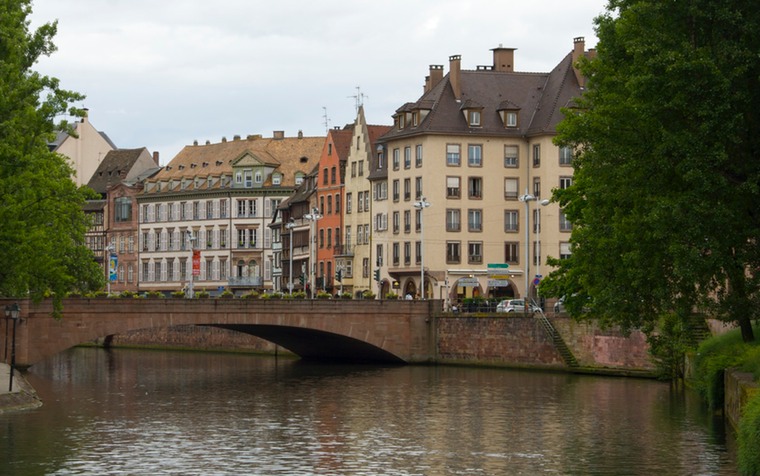
After visiting Switzerland and southern Germany, late in May we crossed the Rhine back into France, this time heading for Strasbourg, which we had bypassed earlier in the month. We had a nice afternoon there, both seeing all the sights we wanted to, and many more because we got so very, very lost walking back to the coach, arriving back just as it started to rain. Strasbourg is justifiably known for its beautiful cathedral, but is also just a great city all together and we really enjoyed our walk. We spent the night in a small tourist town nearby, making new friends of a couple of Scots we parked next to. They gave us lots of ideas of what to see in their homeland, as well as an invitation to visit when we were nearby.
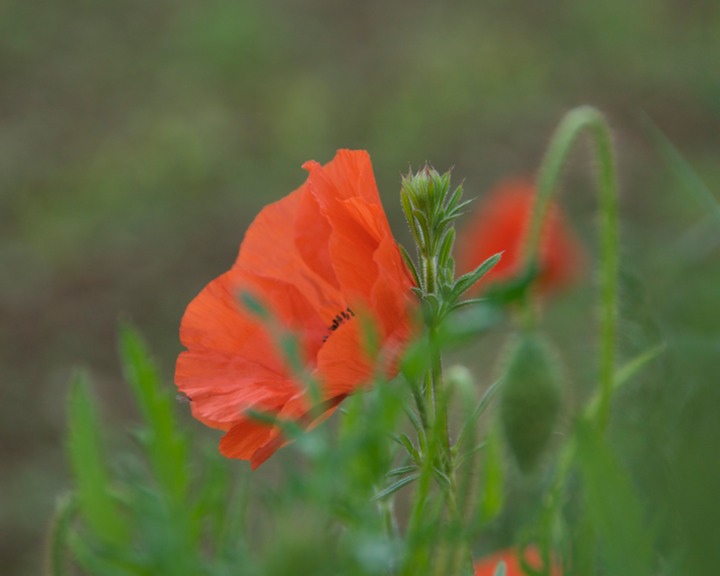
We headed on to Verdun, maybe the single best-known town in France to have endured WWI. As we drove along, we started to see poppies, the ubiquitous red poppy that represents veterans and, in the United States, the American Legion. They are everywhere in this part of France, along the roads and in the fields; they are quite a sight as they line the roadways bordering the fields -- of grain or the wonderful yellow fields of rapeseed or flax or mustard, whatever they are. We found this area to be one of the most beautiful we’ve seen yet; rolling terrain, lots of forested areas, nice little farming towns and lovely vistas in all directions.
Verdun was the beginning of a trek through northern France as we visited various battle sites and museums and monuments, particularly in the valley of the Somme. We had seen in Belgium how WWI has not been forgotten; it is even more evident here in France. Every village has a monument to those who served; there are cemeteries filled with the dead from these towns and of course from around the world. There are many memorials to the troops who fought – and ground dedicated in perpetuity to the Americans, the Canadians, and others – in gratitude for their efforts.
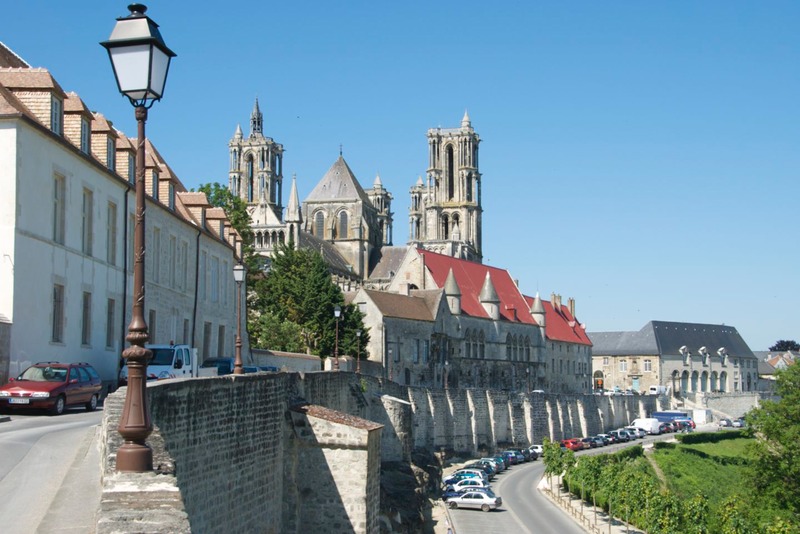
We had decided to skip the big cities in this part of France, and will visit Reims, Amiens, etc. on another occasion. We did, however, enjoy some lovely countryside and wonderful smaller towns such as Laon, a really old town built on a hill that didn’t look close to being big enough for the really big cathedral it has and an honest to goodness chapel built by the Knights Templar. This was a neat experience although maneuvering La Tortuga up the hill through the really tight streets was not a high point. But, we made it and it was definitely a worthwhile visit. Another great spot was Coucy-le-Chateau, a town actually built within the still standing walls of what our guidebook describes as “one of the greatest castles of the middle ages.” Back in the day, the power and wealth of the Sire of Coucy rivaled that of the King of France. Unfortunately, in addition to other damage incurred during the war, the Germans blew up the castle as they departed the position in 1917. Large portions of the wall still remain, and the town within those walls is charming.
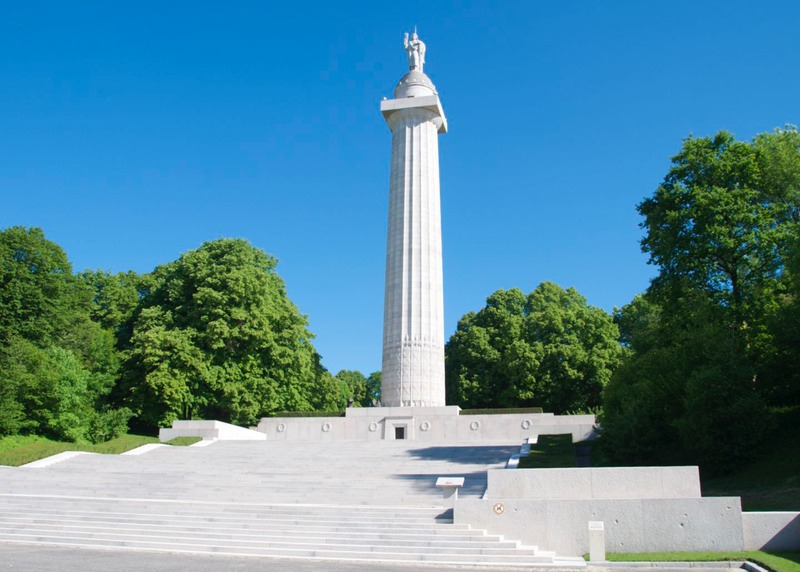
Continuing on with our WWI experience, we thoroughly enjoyed the excellent museums in Verdun, Péronne and at the British memorial at Thiepval; learning far more than we had ever known about what is, in the states at least, a somewhat forgotten war. At the American memorial at Montfaucon, we had a brief chat with some Belgian gentlemen who immediately thanked us for the American efforts on their behalf during both wars. How does one respond to such expressions? Once again in our so far brief time in Europe, we were shown that, despite more recent events, the United States is still greatly respected here for sacrifices made by earlier generations.
Throughout this region there is a very pleasant interface between “sacred ground” and the towns that have grown up since the two world wars; farming is prevalent in this area, but there is always excellent access to any place you want to visit; the cemeteries in their hundreds, both large and small, are lovingly maintained; and there is a real sense of reverence. We had many very moving moments during our time here. While the terrible numbers of killed and wounded soldiers in the war can easily become overwhelming, one that stood out for us was the distressing number of men whose bodies could never be identified. The memorial at Thiepval lists the names of 73,000 British dead who have remained unidentified, while in Belgium at Ieper (Ypres), two separate memorials list 85,000 more. These represent just the British troops, and just the unidentified dead from these two settings.
The Great War, as it was then called, inspired tremendous amounts of music, poetry and other forms of artistic remembrance. One we’d like to share with you here is “In Flanders Fields”, a well known poem written after Dr. John McCrae witnessed the death, and presided over the funeral, of a friend, Lt. Alexis Helmer.
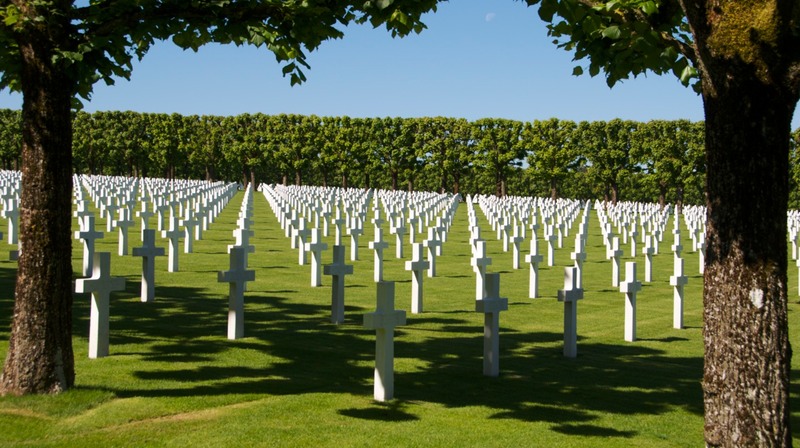
In Flanders fields the poppies blow between the crosses, row on row, That mark our place; and in the sky the larks, still bravely singing, fly scarce heard amid the guns below.
We are the Dead. Short days ago we lived, felt dawn, saw sunset glow, loved, and were loved, and now we lie, in Flanders fields.
Take up our quarrel with the foe: To you from failing hands we throw the torch; be yours to hold it high. If ye break faith with us who die we shall not sleep, though poppies grow in Flanders fields.
Leaving the Somme, we continued moving north and west; our time on the continent was running short for this visit and it was now early June. Aha, said Kathy, we are getting near Azincourt (see above) and its historic battlefield. Time for longbows instead of artillery shells. We wandered through tiny villages, heading for the battlefield and attendant museum. The open field was beautiful and green, and we had picked up a map showing where the English and French lay at the beginning of this important battle in 1415. Cool. Unfortunately, the museum was a real disappointment; quite modern, it seemed to have been put together by a committee with quite disparate ideas of how to do things. There was some good information, particularly a discussion of cross-bows and longbows, with examples to be seen, and why the English longbow was far superior. But in general, we cannot recommend visiting this museum; rent Henry V with Kenneth Brannagh instead.
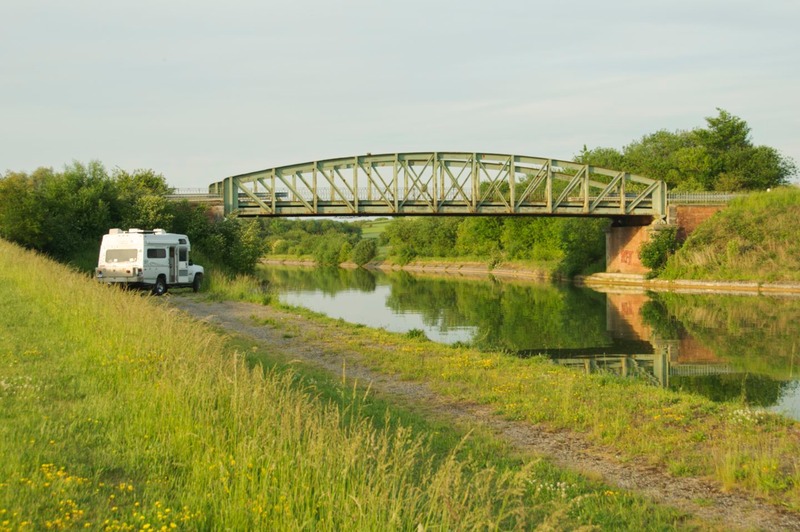
We had intended to head back to Belgium and see the WWI battlefields at Ypres; but we were running out of steam, and never quite got there. We settled, instead, on a pretty spot beside a canal, with swans, a drawbridge for passing boats and a nearby McD for wifi, and enjoyed a few days of completing projects (e.g., this message) before heading for Britain.
We take the ferry from Boulogne to Dover today, with new adventures awaiting us on the other side of the Channel. Rick is practicing a new mantra: “Keep to the left, keep to the left, KEEP TO THE LEFT”. Send us positive vibrations!
Cheerio, Rick and Kathy and the gang
Click here to view more pictures from France.